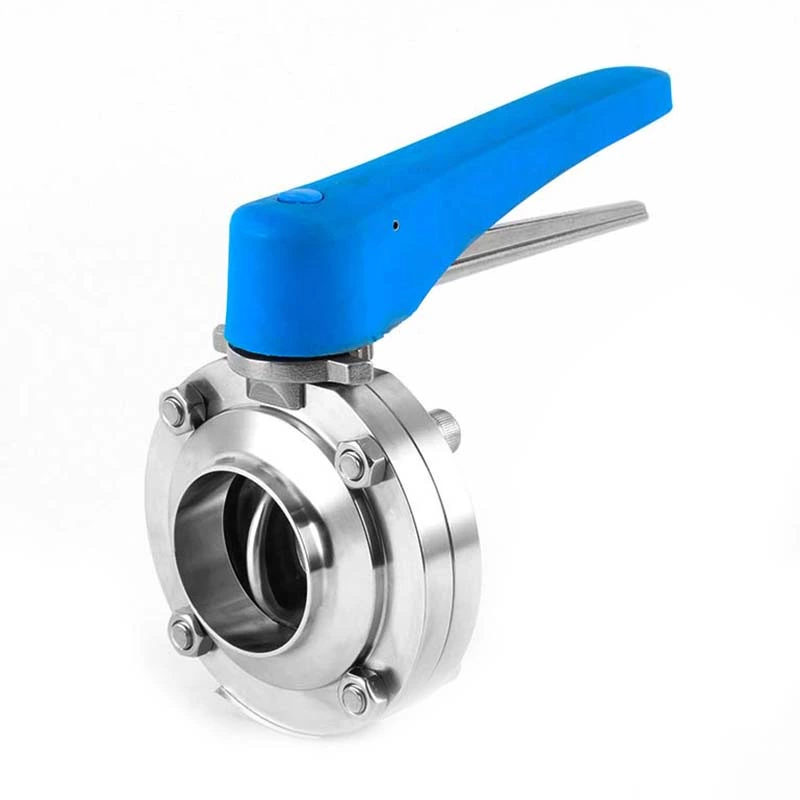How Are Stainless Steel Butterfly Valves Classified According To Sealing?
There are many types of Sanitary Butterfly Valve, and they have their own classifications according to different situations. They play an important role in various scenarios. The following editor will introduce one of the classifications. Let’s take a look at how stainless steel butterfly valves are classified according to the seal and the causes of corrosion!
Classification of stainless steel butterfly valve seals: stainless steel butterfly valves are mainly divided into stainless steel butterfly valve soft seals and stainless steel butterfly valve hard seals
1. Stainless steel soft seal butterfly valve:
Stainless steel soft seal butterfly valve refers to the seal ring. Most center line butterfly valves are soft seals, and center line butterfly valves do not have hard seals
There are three common types of soft seal valve body materials: 1. Ball mill cast iron 2. Cast steel 3. Stainless steel
Commonly used valve seat seals are: 1. Nitrile rubber 2. EPDM (more commonly used, the same material as car tires, good wear resistance) 3. Fluororubber 4. Polytetrafluoroethylene (also commonly used)
The valve plate and valve body are corresponding, and commonly used are: 1. Ball mill casting 2. Cast steel 3. Stainless steel 4. Some working conditions may also use molybdenum steel
The valve stem (also called valve core in butterfly valve) is usually 416 (equivalent to a kind of stainless iron, with strong hardness and very good toughness), followed by 314 and 316.
2. Stainless steel hard seal butterfly valve:
The main body of the stainless steel soft seal butterfly valve is also the valve body, valve plate, and valve core. The main body material is divided into cast steel and stainless steel. The valve plate is also cast steel stainless steel. The valve core is usually at least 304 or 316L. There is no cast iron for hard seals. The use occasions of hard seals and soft seals are also different. Usually, most of the hard seals are used for steam, and some are used for high switching frequency. Hard seals are used only when the product life is longer.
The seals of stainless steel soft seal butterfly valves are usually made of metal sandwich graphite seals (graphite is resistant to high temperatures, up to more than 800 degrees), and polytetrafluoroethylene (polytetrafluoroethylene cannot pass steam, and can withstand instantaneous temperatures of more than 200 degrees, but cannot be kept at high temperatures for a long time. Long-term high temperatures will soften. Because the contact surface of the butterfly valve is relatively large, the valve plate will deform when it rubs during operation, so it cannot withstand high temperatures for a long time). The advantage of hard seals is that the middle sandwich seal can be replaced if it is worn out. Just remove a few screws on one side and replace it directly. The double eccentric seal is on the valve seat, and the seal can also be replaced.
Why does the stainless steel butterfly valve rust?
Stainless steel butterfly valves rely on a thin, solid, dense and stable chromium-rich oxide film (protective film) formed on the surface of stainless steel materials to prevent the continued infiltration and oxidation of oxygen atoms, thereby obtaining the ability to resist corrosion; once this film is continuously damaged for some reason, oxygen atoms in the air or liquid will continue to infiltrate or iron atoms in the metal will continue to separate out, forming loose iron oxide, and the stainless steel butterfly valve will also be continuously corroded;
Generally, the chromium content of stainless steel is generally not less than 12%, and the highest can even reach 18%; after adding chromium and other elements to stainless steel, the properties of steel can be changed, and a dense oxide protective film can be more easily formed on the surface of steel, thereby greatly improving the corrosion resistance of stainless steel butterfly valves.
At present, stainless steel butterfly valves, as a component used to realize the on-off and flow control of pipeline systems, have been widely used in many fields such as petroleum, chemical industry, metallurgy, hydropower, etc.
